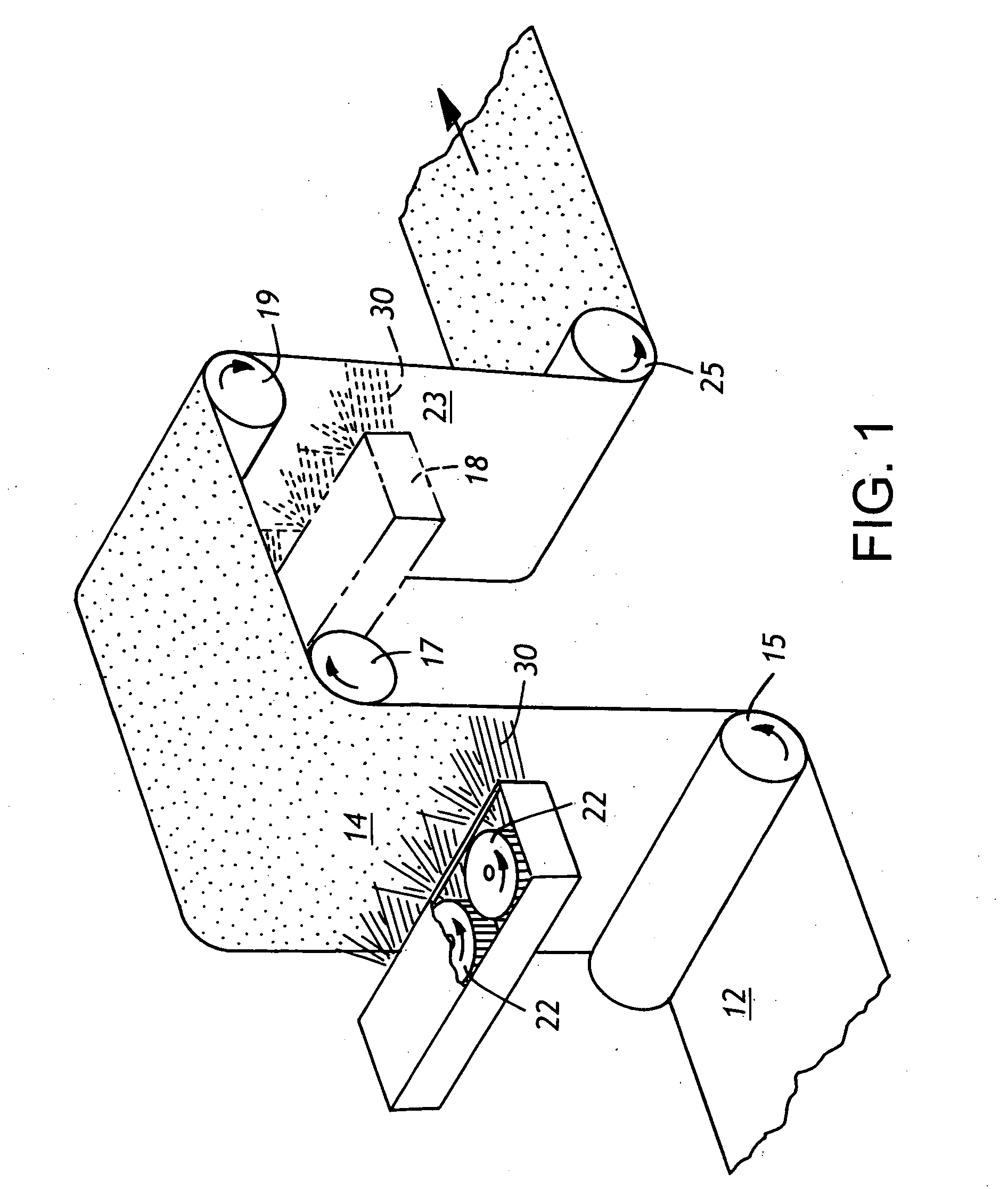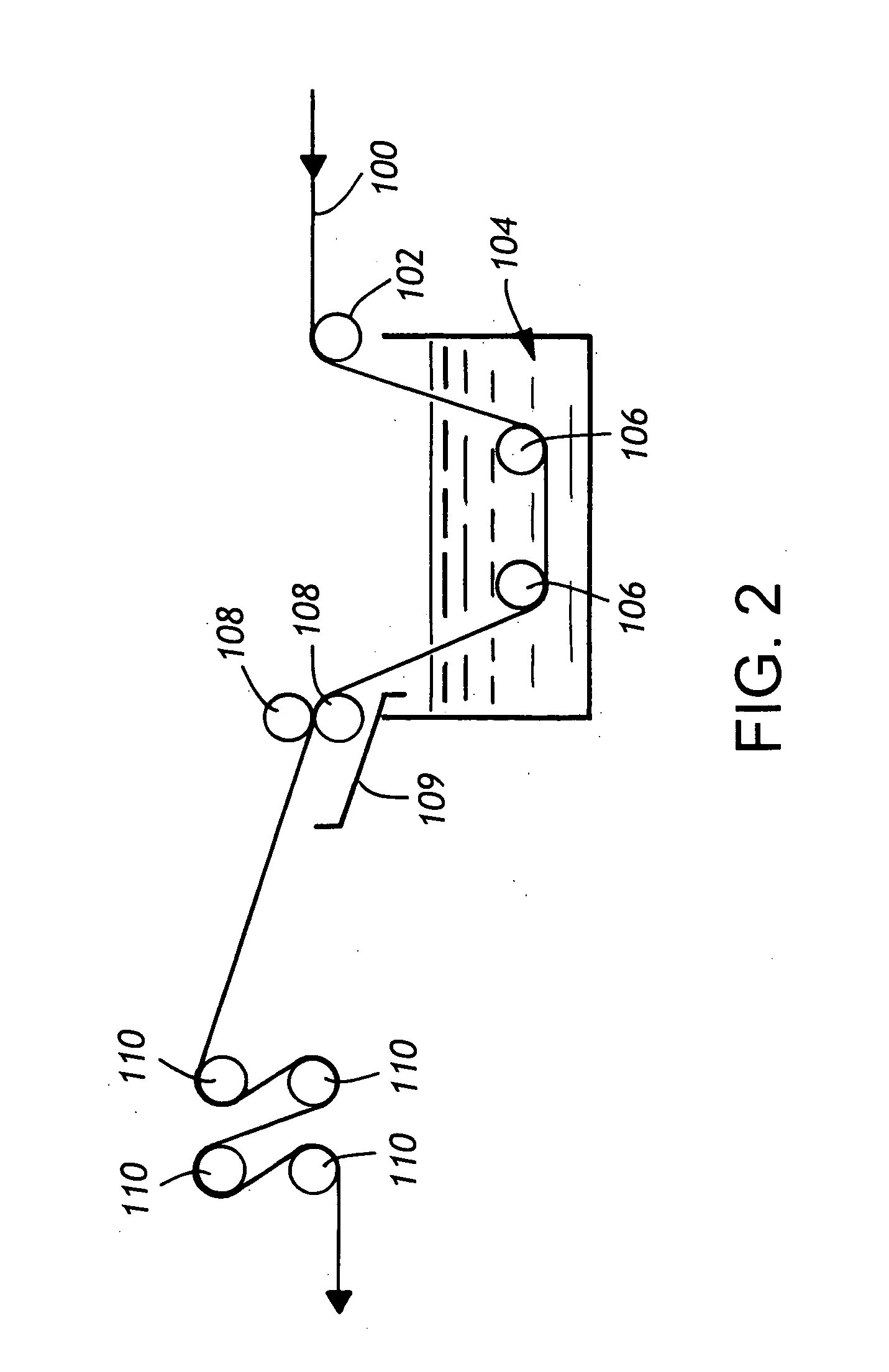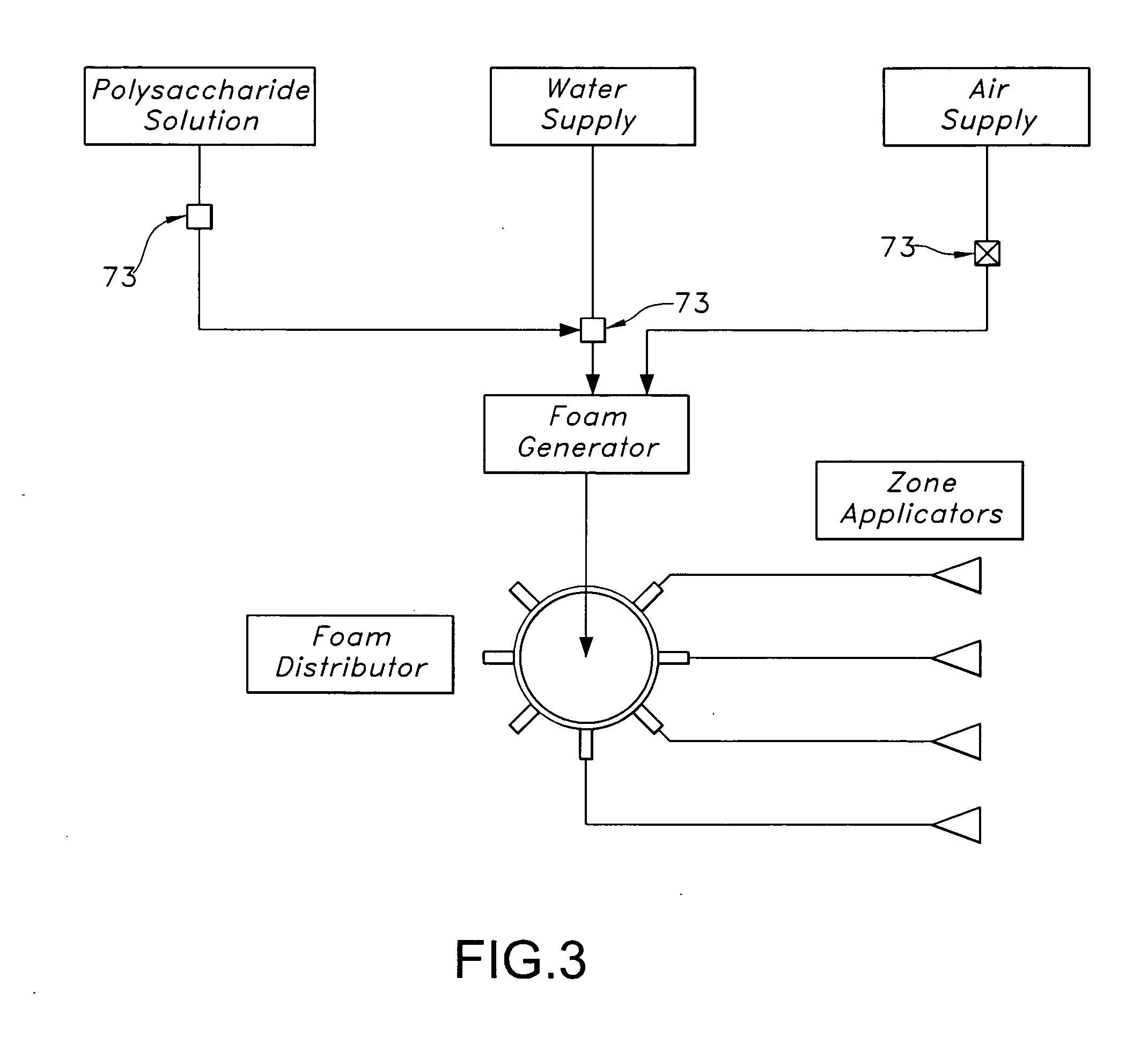Treatment of substrates for improving ink adhesion to substrates
a technology of ink adhesion and treatment, which is applied in the direction of dyeing process, instruments, transportation and packaging, etc., can solve the problems of difficult to get good ink transfer and good ink adhesion to such hydrophobic substrates, and testing outside the specified limits for temperature and humidity may not yield valid results, so as to improve the adhesion of an ink composition
- Summary
- Abstract
- Description
- Claims
- Application Information
AI Technical Summary
Benefits of technology
Problems solved by technology
Method used
Image
Examples
examples
[0075] Samples of the printed breathable HUGGIES diaper outercover laminates of the Comparative Examples above were treated with a 25 weight percent aqueous solution of CIRRASOL PP823 surfactant obtained from Uniquema of Wilmington, Del. The surfactant treated examples were then printed on the nonwoven fabric surface of the breathable laminate with flexographic ink formulation as described above.
[0076] The above examples of the present invention and the Comparative Examples were tested for crockfastness using the test method described above. The crockfastness test is an indication of a printed sample's ink adhesion, specifically an indication of a printed sample's ability to resist abrasion. A summary of results of the testing are presented in Table 1 below.
TABLE 1Sample Color vs.Crock Fastening Rating(CFN)YellowBluePinkBlackOrangeCOMPARATIVE EXAMPLES3.883.632.752.753.75TREATED EXAMPLES4.504.503.634.04.63
*sample size N = 4
[0077] Treatment of the outercover laminate with CIRRASOL...
PUM
| Property | Measurement | Unit |
|---|---|---|
| area | aaaaa | aaaaa |
| weight | aaaaa | aaaaa |
| weight percent | aaaaa | aaaaa |
Abstract
Description
Claims
Application Information
 Login to View More
Login to View More - R&D
- Intellectual Property
- Life Sciences
- Materials
- Tech Scout
- Unparalleled Data Quality
- Higher Quality Content
- 60% Fewer Hallucinations
Browse by: Latest US Patents, China's latest patents, Technical Efficacy Thesaurus, Application Domain, Technology Topic, Popular Technical Reports.
© 2025 PatSnap. All rights reserved.Legal|Privacy policy|Modern Slavery Act Transparency Statement|Sitemap|About US| Contact US: help@patsnap.com



